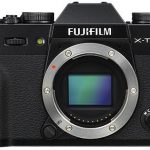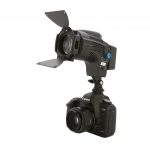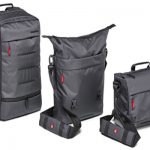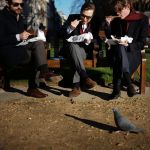The Photography Show 2017 coincided with the 30th anniversary of the Canon EOS system.
Canon pulled out all the stops to showcase on its booth EOS cameras rare, old and new on a giant history wall.
David Parry, Canon’s Product Intelligence Consultant, was the man in the know to take Lok through key moments in the history of the EOS system.
It all began with the EOS 650, launched in 1987 alongside the new EF lens mount. Crucially, the EF lens mount featured an electronic system, where the camera and lens talk to each other seamlessly. This is when autofocus really came to prominence.
Although moving on from the existing Canon FD lens mount, the company made an FD to EF lens adaptor for those that wished to continue using their old lenses.
Most consumer-level cameras today feature scene modes. But this type of shooting automation goes way back, as seen in the barcode reader system of the EOS 10 (1991). The system was Canon’s first try at shooting automation.
The EOS 10 came supplied with a book that features different types of photography (e.g. landscape and portraiture) each with a unique barcode in the book. The camera’s barcode reader inputs those settings on the camera to improve that kind of photography. Shooting automation through the pages of a book!
Unique to Canon at the time, the EOS 5 (1992) featured eye controlled focusing where the camera tracks the user’s eyeball movement through the viewfinder to determine where to focus.
Another innovation came in the fixed mirror of the EOS RT (1989), that eliminated the shutter lag of traditional SLR cameras. The resulting performance improvements yielded what was then a super fast 5fps with uninterrupted view of the action.
Introducing autofocus, shooting automation, the (short lived) APS film, the fixed mirror and eye controlled focusing, the EOS system has continually innovated, changed and improved camera technology and photography.
And that is all before digital camera innovations. Canon collaborated with Kodak for the EOS DCS3 (1995), one of the first digital cameras, offering 1.3-million-pixels.
The EOS 300 (1999) was the first digital camera under £1000, making digital photography more accessible to the masses - a trend that continued through the EOS range.
All this leads to today, a time when Canon currently has 40 EOS digital cameras in its line up - the most ever for the company.
It was a fascinating look down the EOS memory lane, with one final gem to drool over.
Next to the wall and in its own display cabinet was Canon’s 1200mm f/5.6 lens, originally retailing at £69,000 and weighing in at a whopping 16.5kg. Only 20 were ever made and because they use leaded glass, the lens can’t be made any more. This lens changes hands for significantly more money now.
You can watch the video here to see Lok and David’s chat.







